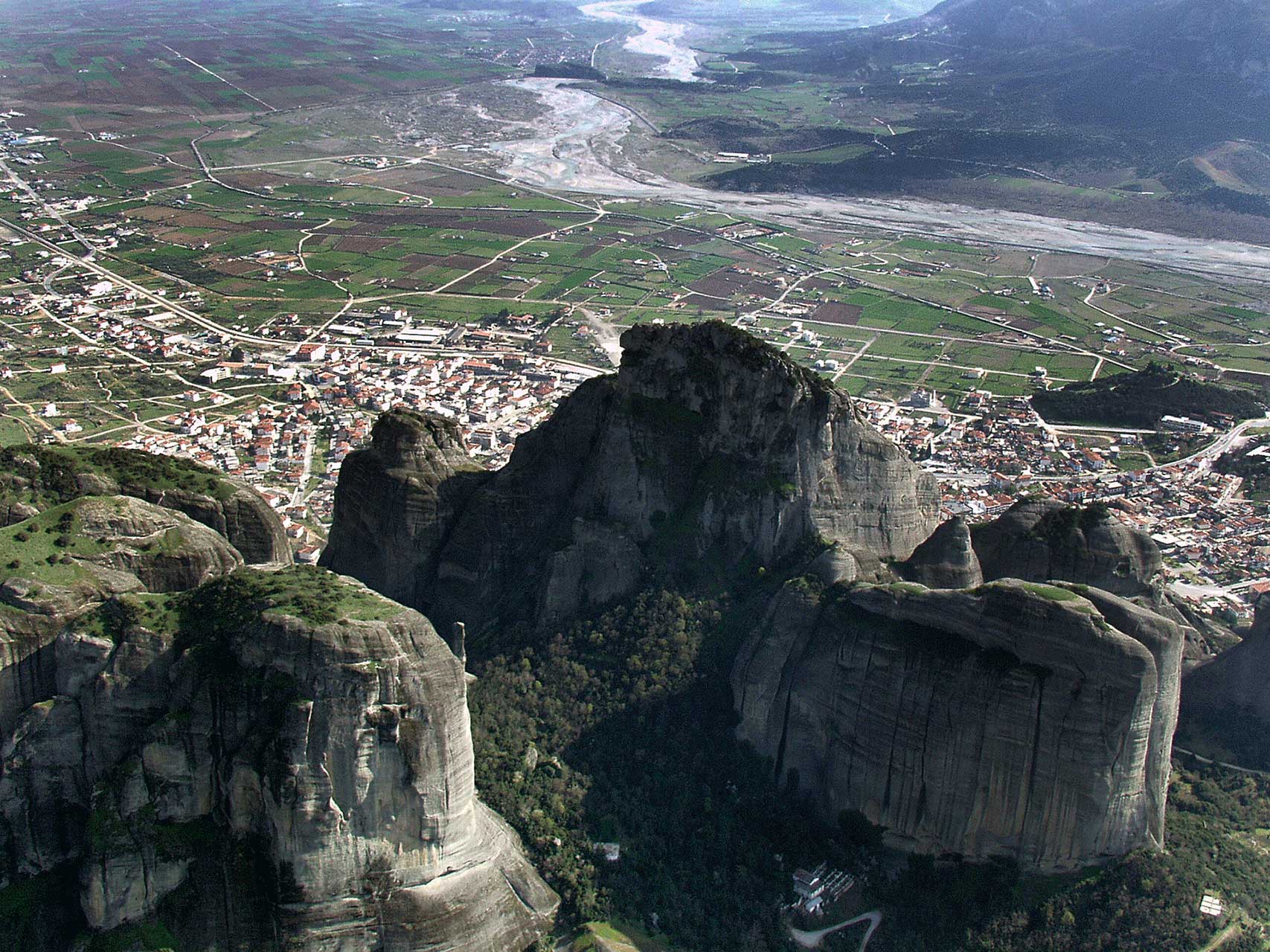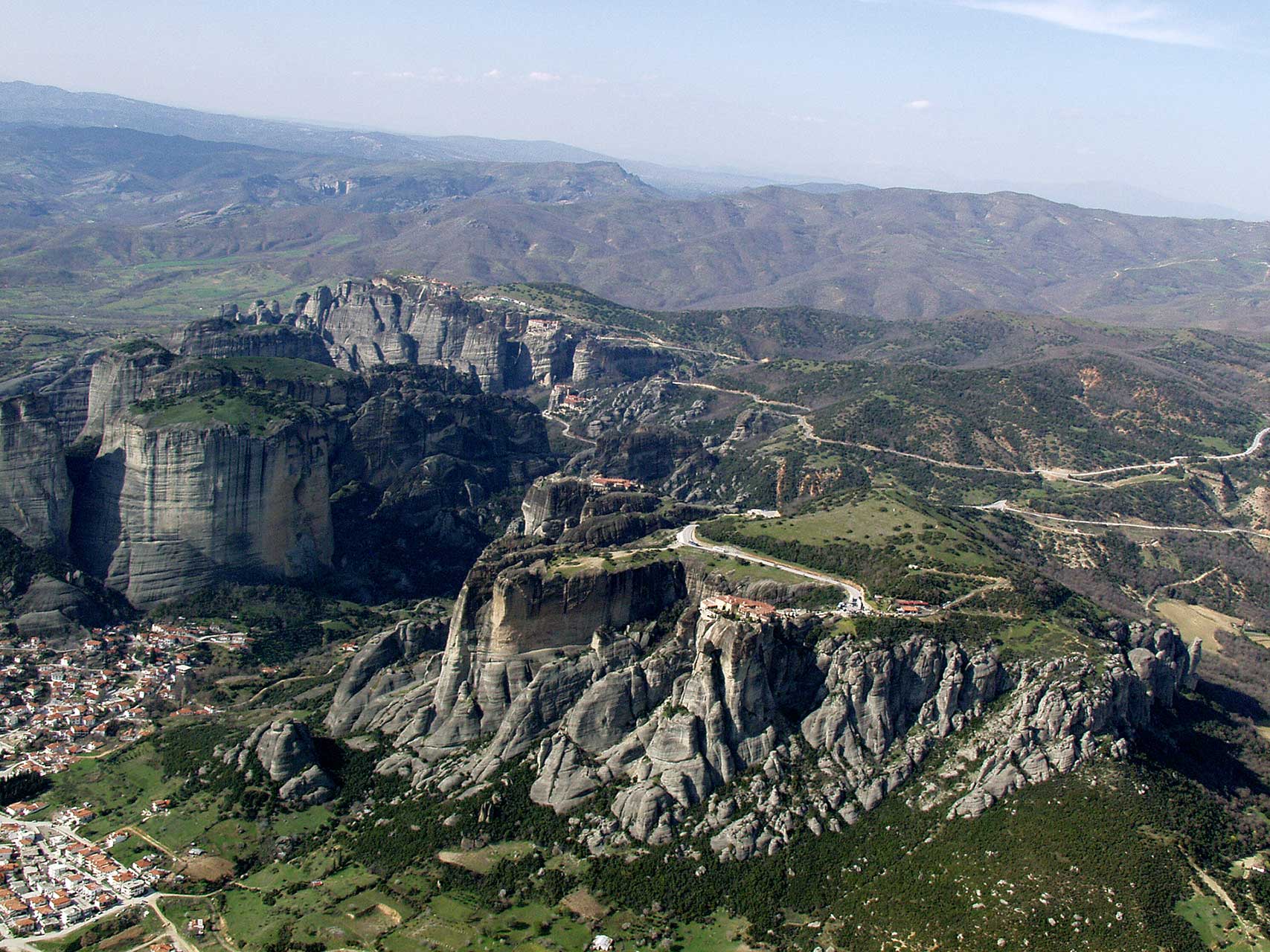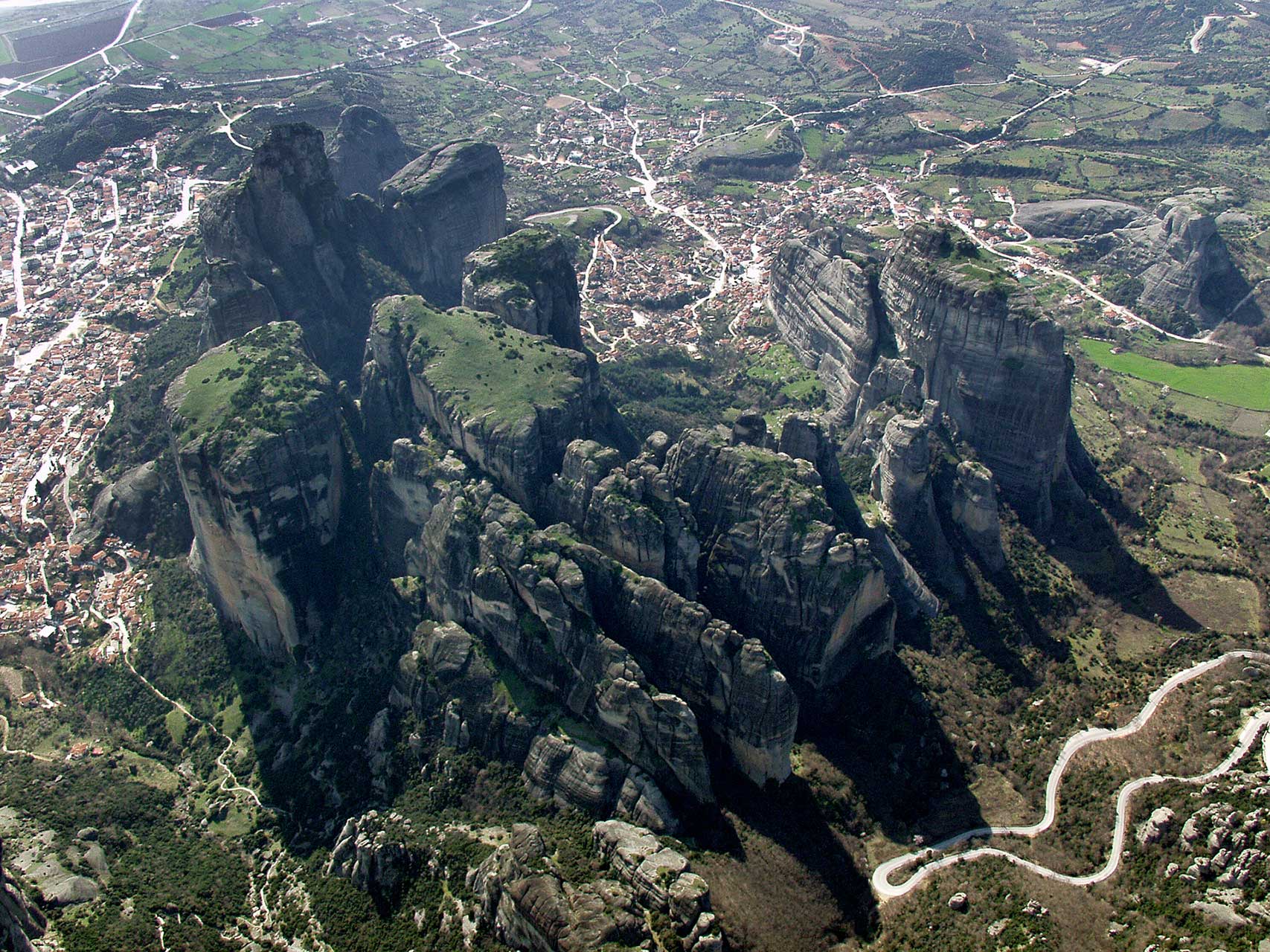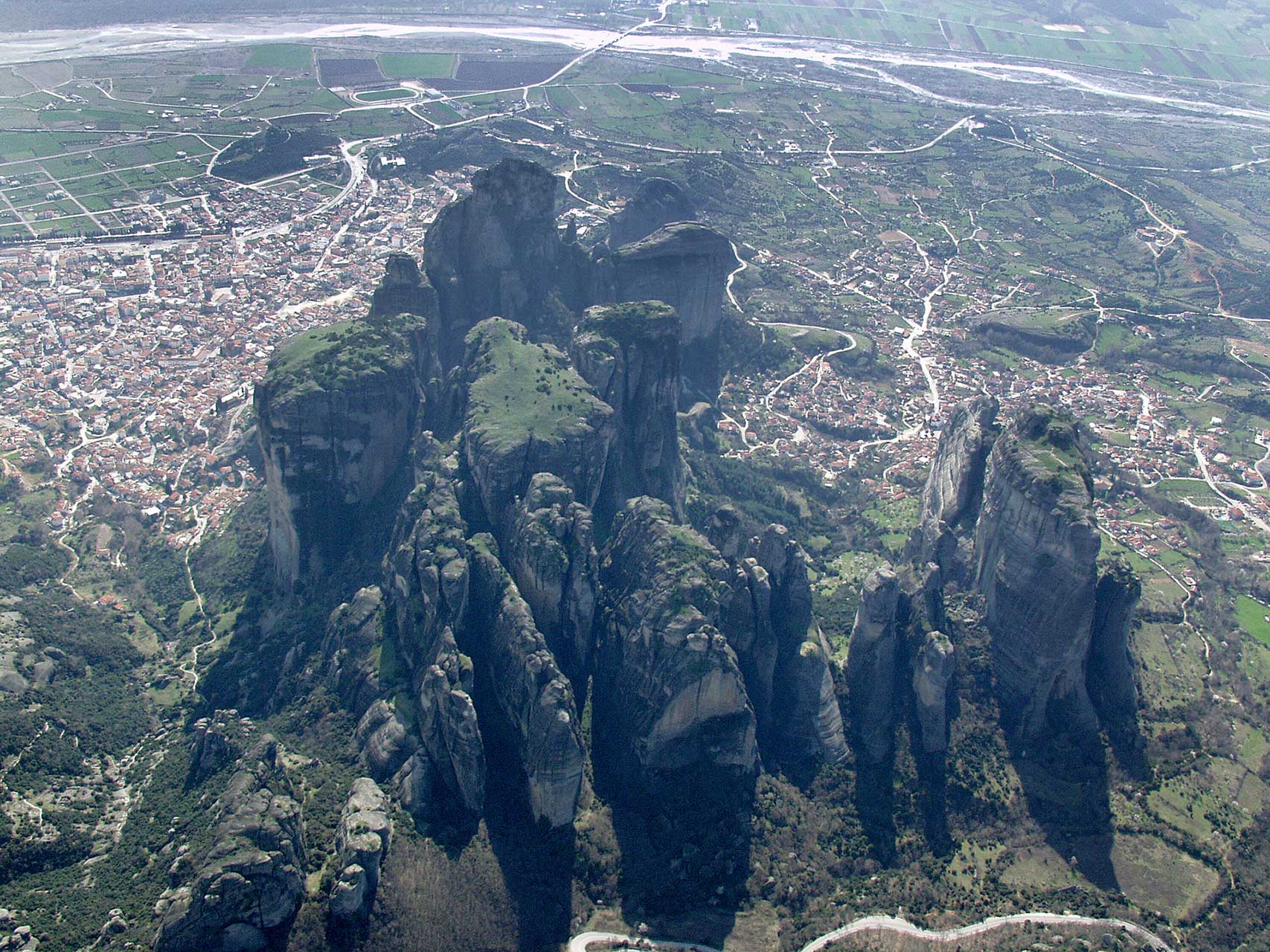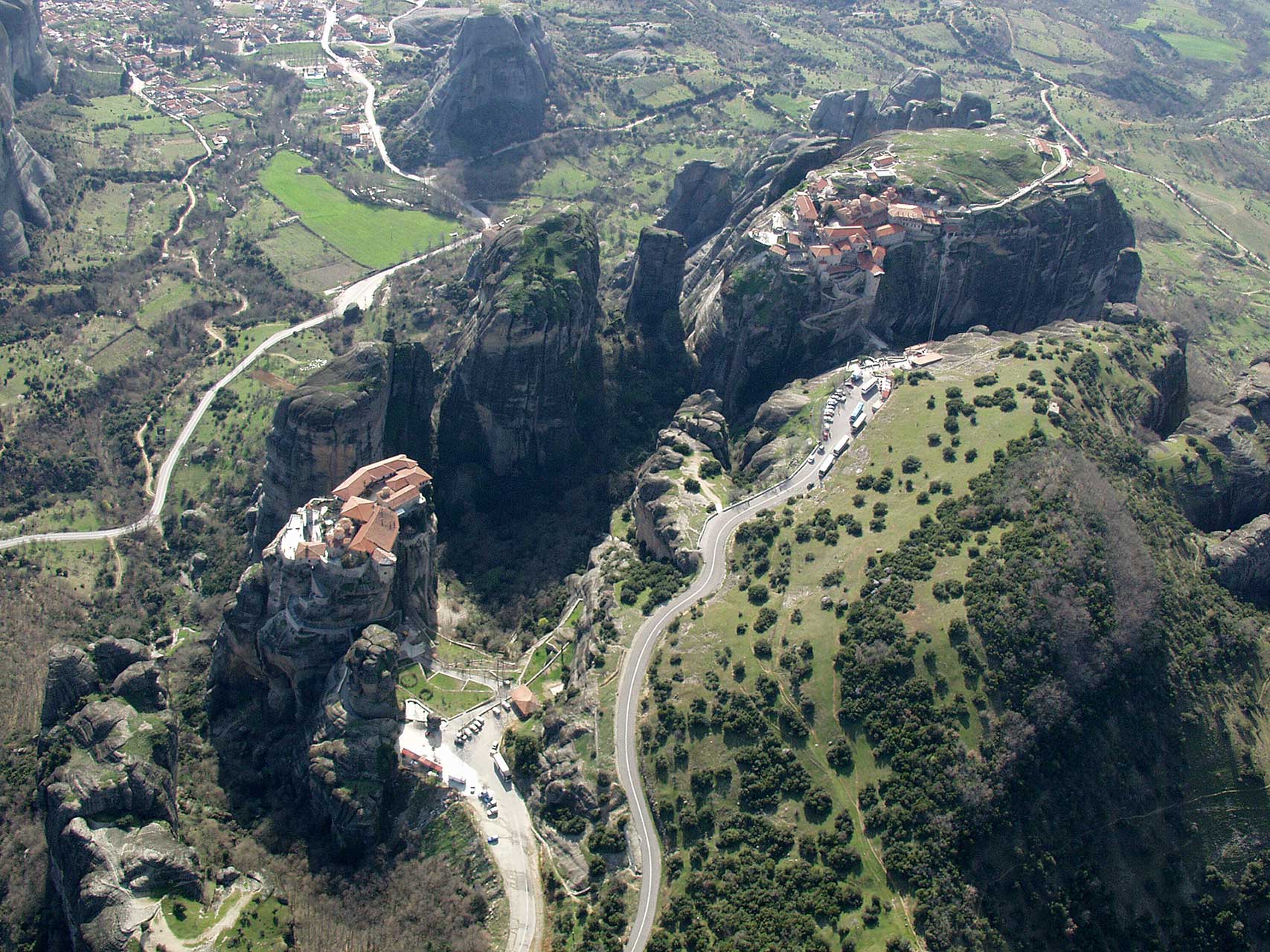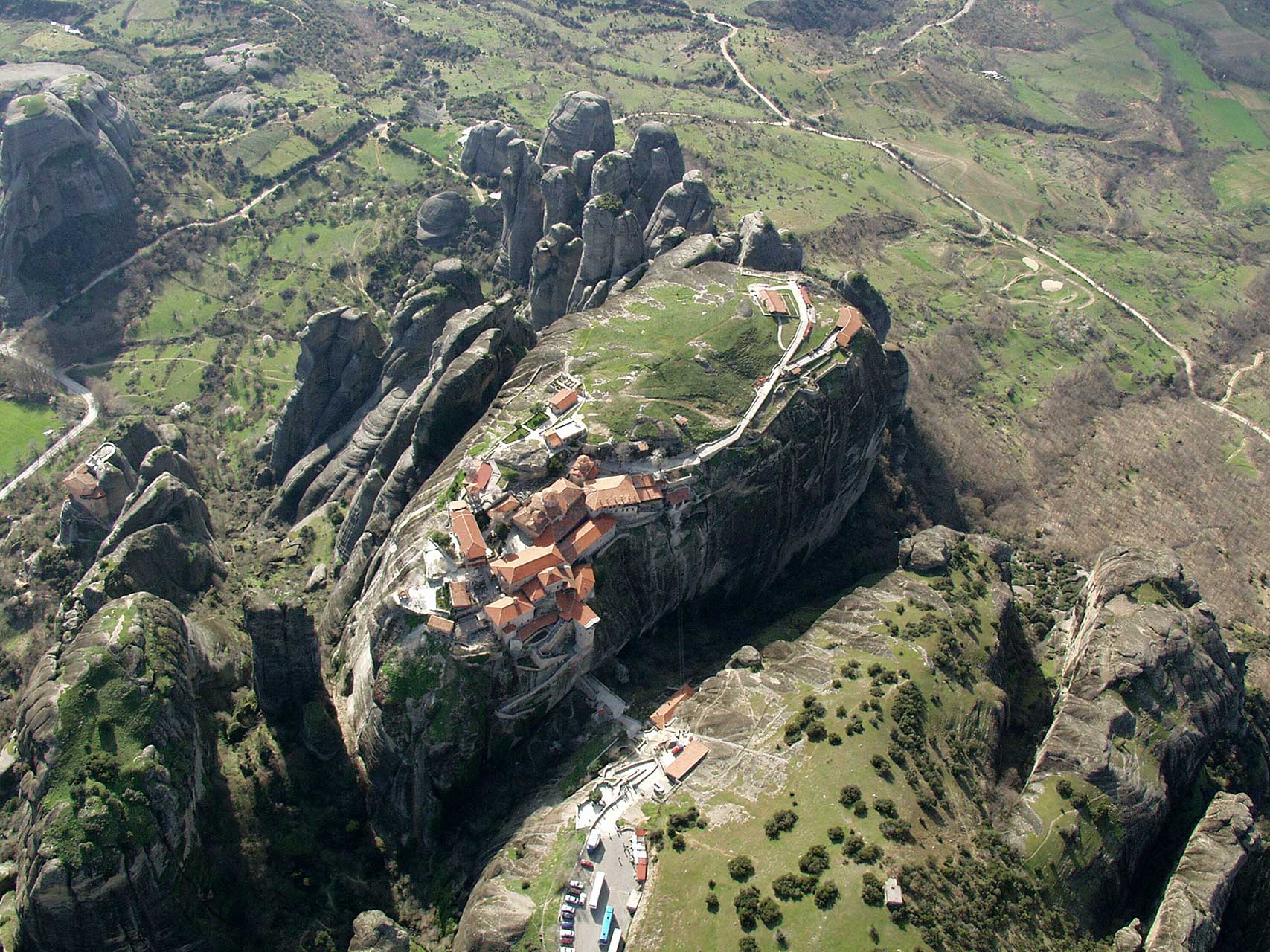Natural Environment-Geology
Meteora is an otherworldly ‘city of rocks’, made up of more than a thousand outcrops in western Thessaly between the towering peaks of Pindus and the Antichasia mountains. Its sublime beauty cannot be conveyed in words or pictures. The soaring monoliths of more than four hundred metres in height seem to have been expressly created by God for the bold ascetics who would seek the ideal place in this tranquil setting to devote themselves wholly to prayer.
The landscape of Meteora and ascetic life are extremely similar. Prayer – deep, all-encompassing prayer – needs a place like Meteora. Somewhere harsh and imposing. It needs bare rock and sky. Lots of sky! (Athanasios Kouros).
The name ‘Meteoron’ was originally used by St Athanasios of Meteora, the founder of the Monastery of the Transfiguration (Metamorphosis), to describe the ‘Broad Rock’ (Platys Lithos), the pinnacle that he was the first to climb in 1343/4 AD. The term was later generally adopted since ‘meteoros’ means suspended in the air, floating. In the Life of St Athanasios, we also find the term ‘city of stone’. Over time a large number of hermitages and monasteries were built on these rocks, making Meteora the second largest monastic complex in Greece after Mount Athos.
Geological Formation of the Rocks
The most probable account of the formation of these rock pillars is that it was the result of a cone-shaped delta, that is, a mass of rocks, sand and sediment carried by a river and deposited in the ancient lake of Thessaly. Twenty-five million years ago this river entered the sea near present-day Kalambaka. When the water mass found an outlet in the Aegean Sea, following the separation of Mount Olympus from Mount Ossa, the cone-shaped delta that had accumulated was eroded by earthquakes, wind and heavy rainfall, and split to form hills and cavernous rocks of different shapes.

